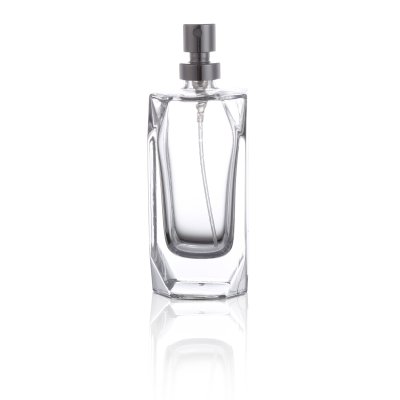World Perfume Bottle Development Anecdotes
World Perfume Bottle Development Anecdotes
Explore World Cities and Understand Their Culture, History, Architecture, Art, and Lifestyle
Published on November 5, 2024 at 17:20 in Shanghai
The history of human fragrance use can be traced back thousands of years. Before perfume became a widely available consumer product, its containers were not mass-produced by industry but were instead carefully crafted collectibles. Over time, the design of perfume bottles has evolved continuously, reflecting the characteristics of each era.
Examples of Historical Perfume Bottles:
Book-shaped Perfume Flask from France (circa 1750-1800)
Greek Terracotta Dove-bodied Fragrance Bottle (circa 570 BC)
Fine-necked Perfume Bottle from the 6th century BC, featuring a scene of a woman and a dog, housed in the Girona Archaeological Museum, Spain.
Ancient Greek Pottery for Perfume or Oil decorated with four warriors holding shields and spears, dating from the 4th century BC, housed in the Barcelona Perfume Museum, Spain.
Hunter-themed Perfume Bottle produced by the Ludwigsburg Porcelain Factory (circa 1775), Germany.
Jade Incense Tube from the Qing Dynasty of China, housed in the East Asian Art Museum.
Diamond-cut Perfume Bottle engraved with the portrait of the Regent, dating around 1800.
Perfume Accessories and Trays from India (18th to 19th centuries).
Glass Perfume Bottle from 19th-century France, housed in the French Perfume Museum.
Glass Perfume Bottle from Bohemia (late 19th century).
Baccarat Perfume Bottle (late 19th century).
Fabergé Workshop Perfume Bottle (late 19th century).
Milestones in Perfume Bottle Design:
1907: The first spray perfume was introduced. Although expensive at the time, the ingenious design that transformed liquid perfume into a spray was highly acclaimed. The most popular perfume bottle of the year was DeVilbiss, with an elegant curve, floral cap, and a combination of gold and warm tones, exuding nobility and elegance.
World War I Era: American soldiers brought perfumes from overseas as gifts for their loved ones, increasing demand. As sales increased, American perfume companies sprouted like mushrooms after rain, collaborating with fashion designers to create new bottle designs.
The Era of Chanel No.5: This period marked the beginning of Chanel No.5's legendary history.
1950s: American photographer Horst P. Horst created a montage photograph featuring a swimsuit model inside a giant Chanel No.5 perfume bottle.
1950s Design Trends: Influenced by modern art movements, perfume manufacturers became sponsors of expressionist and surrealist artists.
1946: To commemorate the end of World War II, fashion designer Elsa Schiaparelli collaborated with renowned artist Salvador Dalí to create an extraordinary perfume bottle for her personal perfume series "Le Roy Soleil" (The Sun King). The bottle design was named after Dalí's watercolor work "King Sun," symbolizing French freedom and liberation, with a unique shape.
1960s: People favored perfume bottles with graceful lines and bright colors. In the following decade, independent and powerful female images gained popularity. Strong musk scents also found their place in the fragrance world. For example, Houbigant's musk perfume featured themes of heavy metal and gender neutrality in its bottle design.
1980s: The invention of built-in sprayers made perfume truly portable cosmetics. The widespread application of plastic made perfume accessible to a broader consumer base. During this period, Dior's Poison stood out among many perfumes. Launched in 1985, it had a deep plum-colored round apothecary bottle with a crystal stopper, golden text, and shining details, maintaining a luxurious appearance.
1990s: Perfume bottle designs followed the minimalist trend. With the development of outsourcing industries, perfume bottle production moved to developing countries. The rise of designer fashion brands led to the popularity of designer perfumes. Among the classics were Calvin Klein's series of perfumes, whose bottles resembled small drinkable bottles; and Issey Miyake's "L'Eau d'Issey," which conveyed Zen philosophy through lotus flowers and Oriental fragrances, with a slender tower-shaped bottle.
21st Century: Perfume bottles have become increasingly diverse and unconventional. Lady Gaga's Fame is a standout with its black oval bottle and gold beetle-shaped cap. Another notable example is Nicki Minaj's Pink Friday, whose perfume bottle is a miniature replica of the singer herself.






